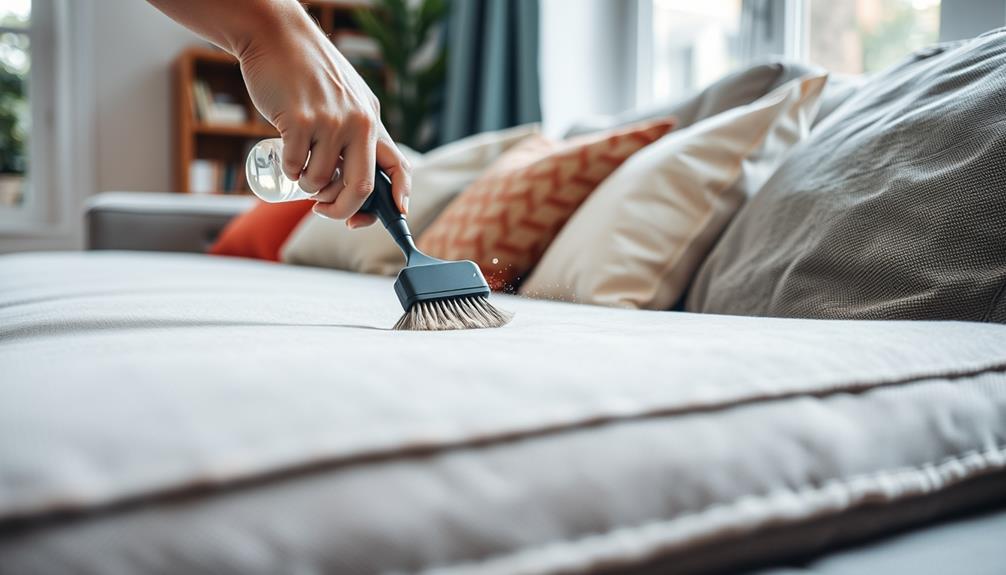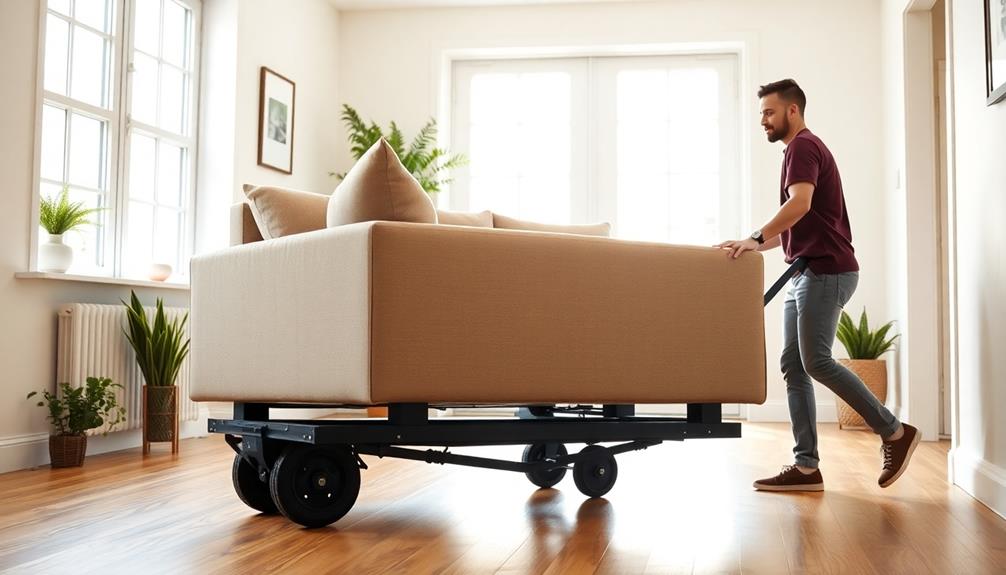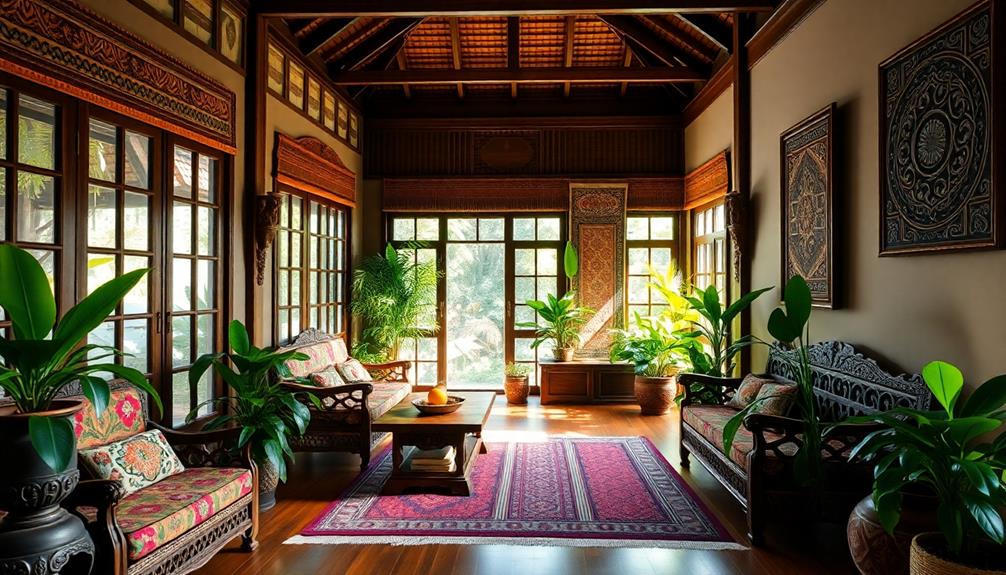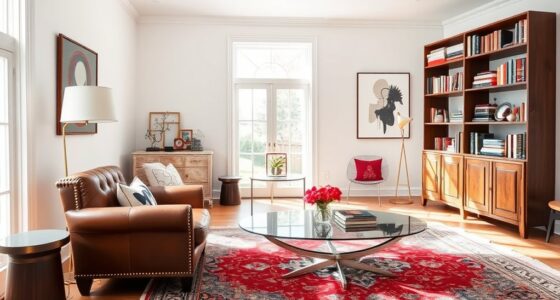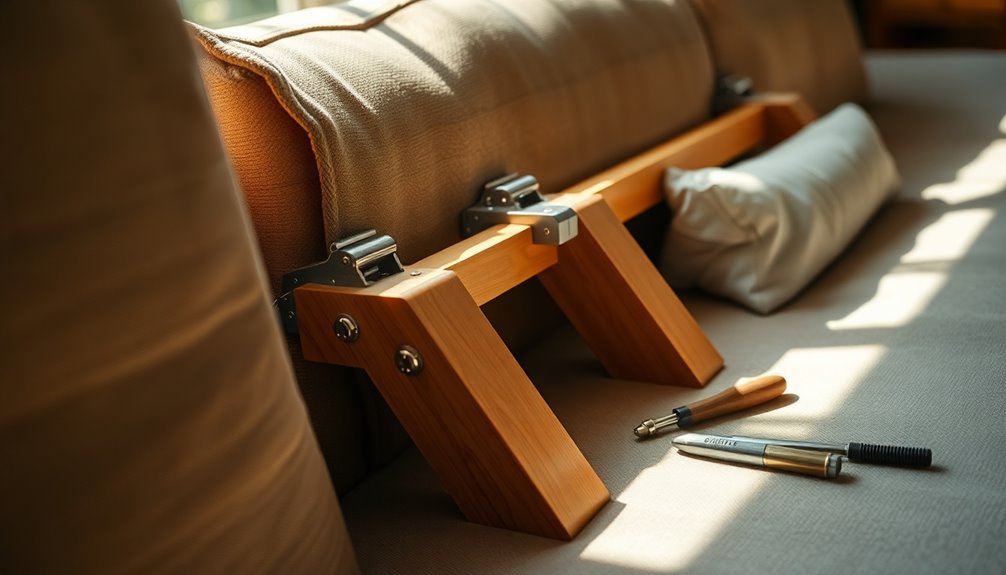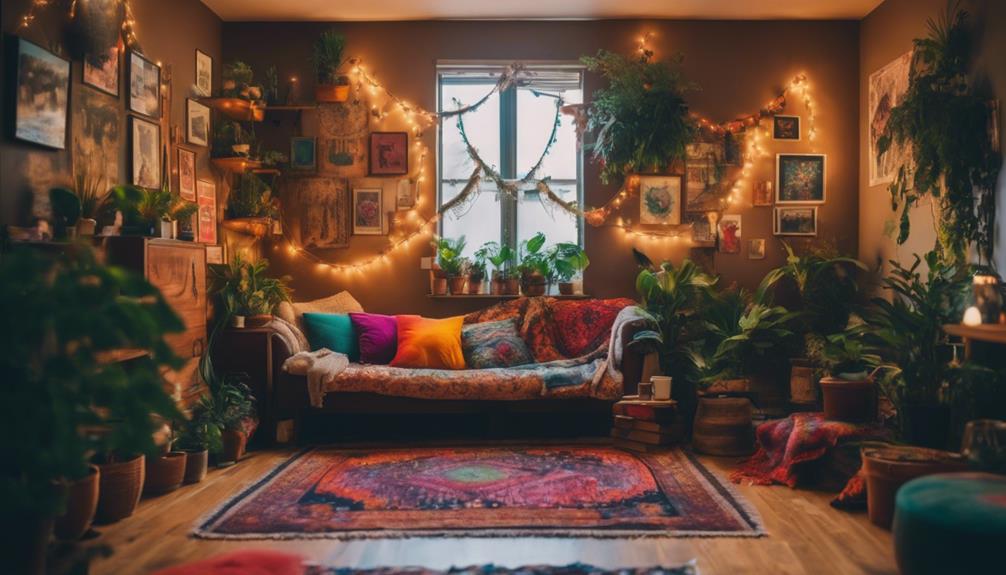To maintain the cleanliness of your sofa fabric, start by referring to the cleaning tag for specific guidelines and codes. Thoroughly vacuum to eliminate dust and debris. For any stains, create a mixture of distilled water, dish soap, and vinegar, then gently dab the stain with a moist microfiber cloth. To eliminate odors, sprinkle baking soda and let it sit before vacuuming. If your sofa allows for steam cleaning, ensure adequate ventilation during the process. Consistent upkeep, such as weekly vacuuming and the application of fabric protector, can help preserve the appearance of your sofa. There is a wealth of information available on how to care for your furniture. For more in-depth fabric sofa cleaning advice, consider hiring a professional upholstery cleaning service every 12-18 months. This can eliminate deeply embedded dirt and allergens, extending the life of your sofa. Moreover, rotating and flipping the cushions regularly can help distribute wear and tear evenly. By following these fabric sofa cleaning tips, you can ensure your sofa remains in top condition for years to come.
Key Takeaways
- Always check the manufacturer's cleaning instructions and codes to avoid damaging the fabric.
- Vacuum the sofa regularly to remove dust, allergens, and debris.
- For stains, use a blotting technique with a damp microfiber cloth and a stain treatment mixture.
- Sprinkle baking soda on the sofa to absorb odors, letting it sit before vacuuming.
- Deep clean your sofa every 12 to 18 months to maintain its appearance and hygiene.
Importance of Manufacturer's Instructions
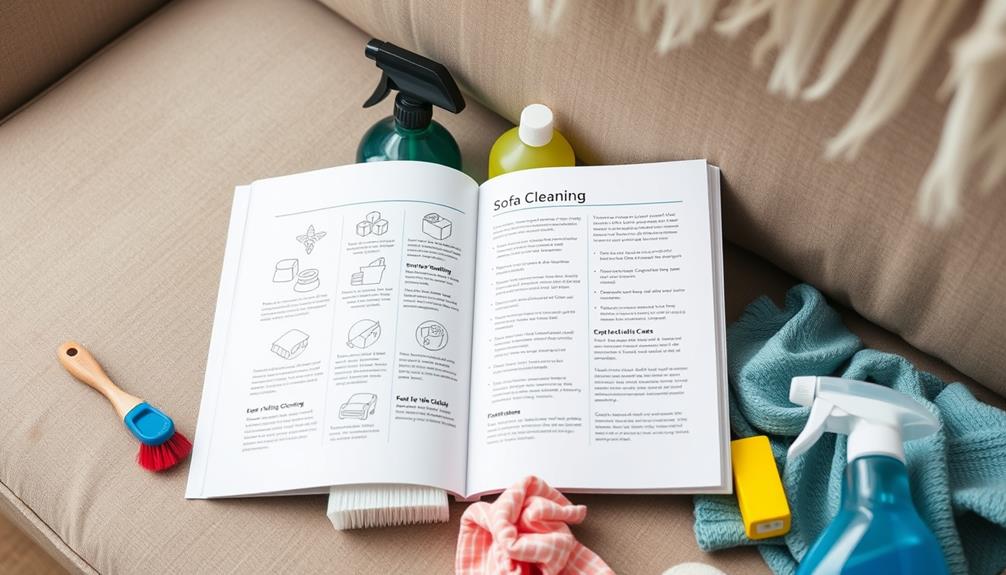
When you're getting ready to clean your sofa, it's important to check the manufacturer's instructions first. These guidelines are your best resource for making sure you use the appropriate cleaning methods that won't harm your sofa.
The cleaning tag on your sofa cushions contains vital information regarding the fabric care, and ignoring these recommendations can lead to costly mistakes. Additionally, understanding the importance of financial considerations for elderly care can help you make informed decisions about maintaining your furniture investments.
By following the manufacturer's instructions, you'll avoid potential damage that could compromise your upholstery integrity. Whether it's a specific cleaning solution or a gentle cleaning process, adhering to these guidelines helps preserve the appearance of your sofa for years to come.
Additionally, using the wrong cleaning methods may void your warranty conditions, leaving you unprotected against future fabric issues. So, before you tackle those stains, take a moment to review the cleaning recommendations.
This simple step guarantees you maintain the beauty and durability of your sofa while keeping your investment intact. With the right approach, you can enjoy a clean and inviting living space without the worry of damaging your furniture.
Understanding Cleaning Tags
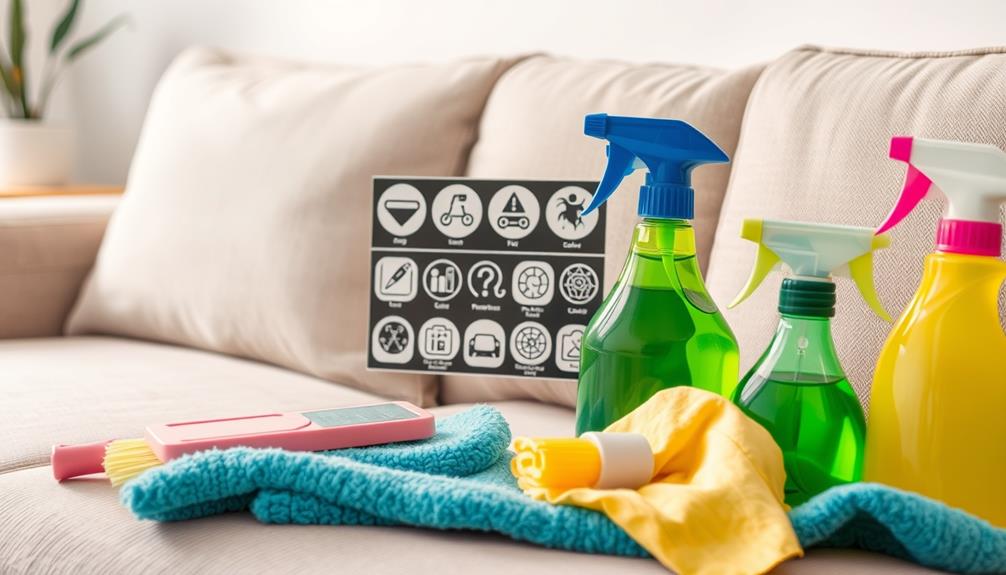
When you're ready to clean your sofa, understanding the cleaning tags is essential. Each code—like "W," "S," "WS," or "X"—tells you how to safely treat the fabric without causing damage.
For instance, using a vacuum with a best vacuums for dust removal in 2024 can help eliminate allergens and dust from your sofa effectively.
Ignoring these tags can lead to costly mistakes, so pay attention to what they say!
Cleaning Code Definitions
Understanding cleaning codes on your sofa's fabric tag is essential for proper maintenance. These codes guide you in choosing the right cleaning methods, ensuring your upholstery stays in great shape. Here's a quick reference for the common cleaning codes you'll encounter:
| Cleaning Code | Description |
|---|---|
| W | Use water-based cleaners. |
| S | Use solvent-based cleaners only. |
| WS | Use both water and solvent-based cleaners. |
| X | Only vacuuming is allowed. |
The W code means you can safely use water and water-based products, making cleaning a breeze with everyday items. If you see an S code, it indicates that your fabric needs special care with solvent-based cleaners, limiting your options. The WS code offers flexibility for tougher stains, allowing both cleaning methods. Finally, fabrics marked with an X code require you to only vacuum, as any moisture could cause damage. By understanding these cleaning codes, you can take better care of your sofa and prolong its life.
Importance of Tag Reading
Reading your sofa's cleaning tag is vital for maintaining its appearance and longevity. These cleaning tags provide essential information through distinct cleaning codes. For instance, a "W" means you can use water for cleaning, while "S" indicates you should use solvent-based cleaners only. If you see "WS," both options are safe, and "X" means only vacuuming is allowed. Misinterpreting these codes can lead to fabric damage, compromising the integrity of your sofa.
Additionally, just as with appliance maintenance plans, regular upkeep of your furniture can prevent long-term deterioration and costly repairs.
Always follow the manufacturer's instructions found on the tags. Ignoring these guidelines may not only harm your upholstery but could also void any warranties, resulting in costly repairs or replacements. Before applying any cleaning solution, it's wise to perform spot testing on a hidden area to check for color loss or damage, especially with printed fabrics.
Understanding these cleaning tags empowers you to choose the right cleaning methods, ultimately extending the lifespan of your upholstered furniture. By adhering to the cleaning codes and recommendations, you guarantee that your sofa remains in excellent condition for years to come.
Cleaning Stained Fabric Sofas
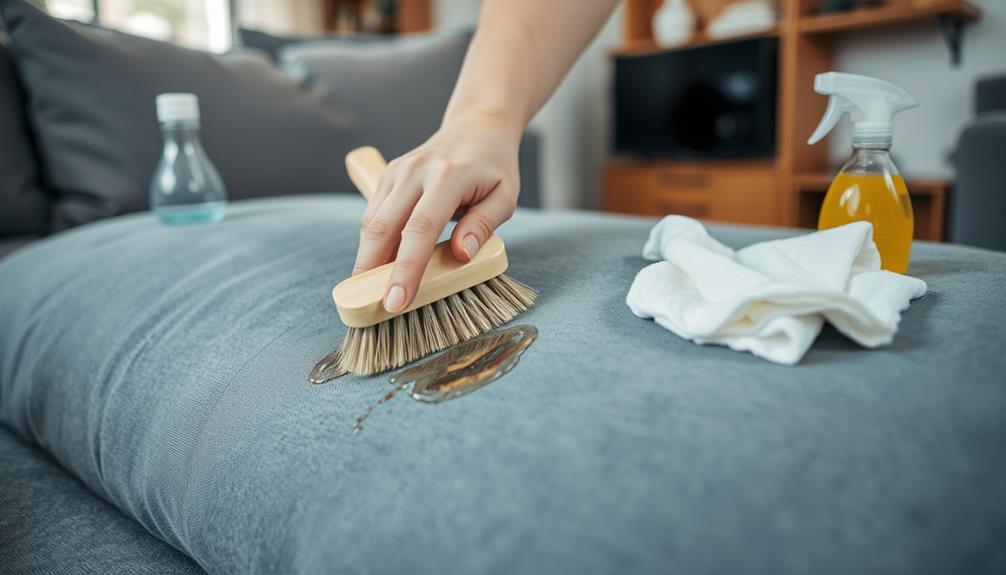
Cleaning stained fabric sofas can seem challenging, but it's manageable with the right approach. Start by vacuuming your sofa thoroughly to remove any dirt and debris, similar to how you'd maintain an air purifier to guarantee peak performance. This step is vital before addressing any stains.
Next, check the manufacturer's cleaning instructions and the cleaning code on the sofa's tag to confirm you're using the proper method.
For stained areas, mix distilled water, dish soap, and vinegar in a bucket. Then, take a damp microfiber cloth and gently blot the stained area. Avoid scrubbing, as this can damage the fabric. Remember, it's important to act quickly—spot clean spills immediately to prevent them from setting into permanent stains.
After you've treated the stains, use a fan to make sure the cleaned area dries completely. This helps prevent mildew and maintains the integrity of the fabric.
Regular maintenance and prompt attention to spills will keep your sofa looking fresh and clean. By following these steps, you'll be well on your way to successfully cleaning your stained fabric sofa and extending its lifespan.
Steam Cleaning Techniques
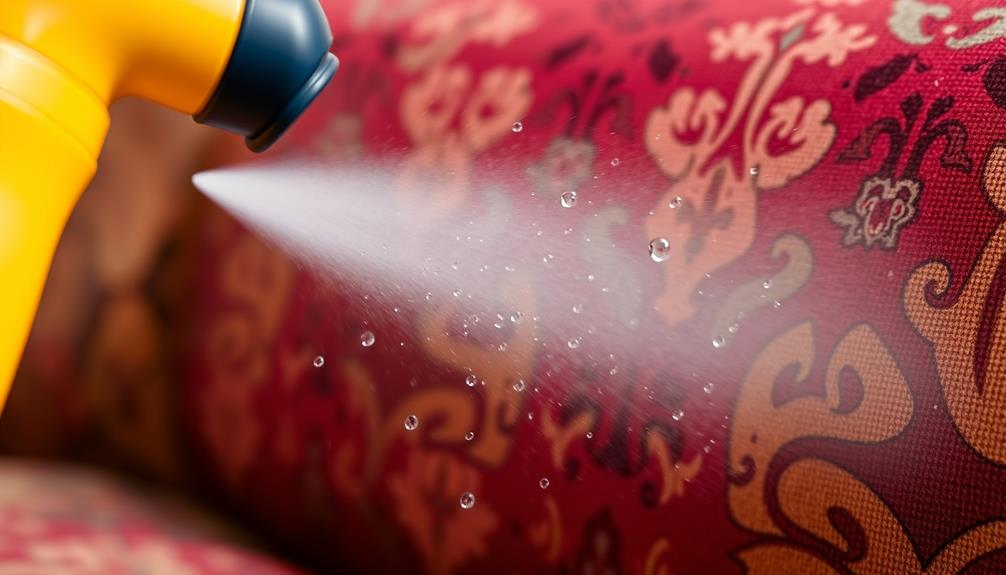
Once you've tackled any stains, steam cleaning can be a great next step to refresh your fabric sofa.
Before diving in, check the manufacturer's instructions to verify your sofa is tagged with a "W" or "WS" code, indicating that water or steam cleaning is permissible. This will help you avoid any damage to the fabric.
For those who enjoy coffee, consider how the unique aroma in homes can be enhanced while you clean, creating a pleasant environment as you work on your sofa. Various brewing methods can lead to a more enjoyable coffee experience.
Start by vacuuming the sofa thoroughly to remove loose dirt and debris for ideal results.
Once that's done, prepare your upholstery cleaning machine according to the manufacturer's recommendations. When you begin steam cleaning, verify you're using the correct settings as indicated in the instructions.
For better results, open windows for ventilation during the process. This not only helps the fabric dry faster but also reduces humidity in the room.
After steam cleaning, allow your upholstery to air dry completely. If you want to speed up the drying process, consider using a fan to help circulate air.
Following these steps will leave your fabric sofa looking refreshed and clean!
Odor Removal Strategies
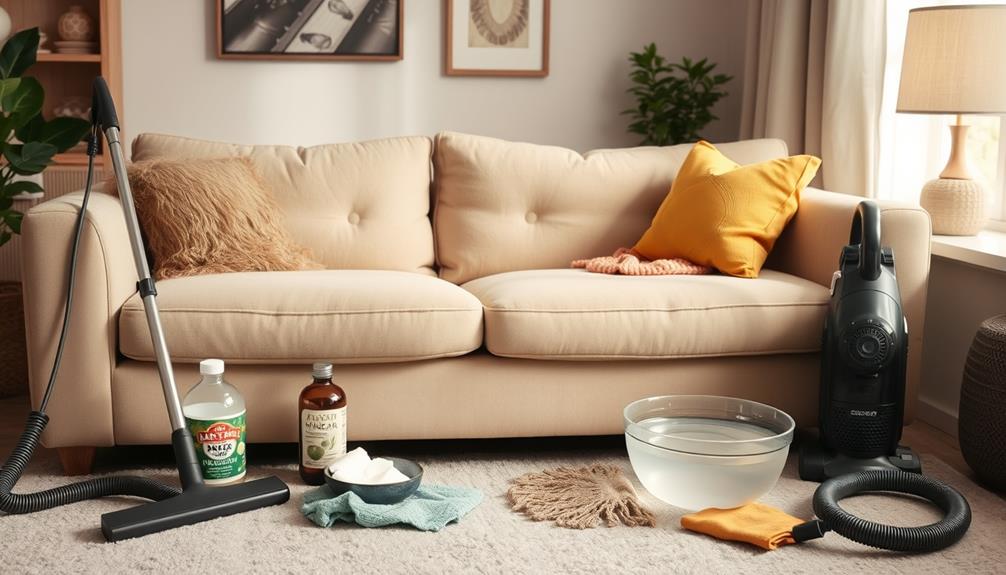
To tackle unpleasant odors on your sofa, start by applying baking soda, which effectively absorbs smells and is often recommended for different carpet cleaning methods.
After letting it sit for a while, vacuum it off for a fresh scent.
If odors persist, consider using a vinegar and water mixture to neutralize them, but remember to test a small area first.
Baking Soda Application
Baking soda serves as a powerful ally in the battle against unpleasant sofa odors. This versatile ingredient can effectively neutralize smells and help maintain clean upholstery, making it a great addition to your regular cleaning routine.
Here's how to use it effectively:
1. Check for Colorfastness: Before applying baking soda to your sofa fabric, test a hidden area to verify it won't discolor the material.
2. Sprinkle Generously: Once you confirm colorfastness, sprinkle a generous amount of baking soda over the affected areas. This helps absorb and remove odors effectively.
3. Let It Sit: Allow the baking soda to sit for 20 minutes to 1 hour. The longer it rests, the better it can neutralize smells, especially for severe odors.
For even more effective cleaning, consider incorporating natural remedies alongside baking soda.
4. Vacuum Baking Soda: After the waiting period, thoroughly vacuum the baking soda to remove both the powder and any absorbed odors. This step is essential for a thorough cleaning.
Regular application of baking soda can help maintain a fresh scent in your upholstery, making it a valuable part of sofa maintenance.
Vinegar Odor Neutralizer
After using baking soda to tackle odors, you might want to try vinegar as another effective odor neutralizer for your sofa fabric. Distilled white vinegar, when diluted with water, works wonders in eliminating unpleasant smells without leaving any residue behind.
Additionally, incorporating essential oils such as lavender for its calming effects can further enhance the freshness of your sofa, making it a more inviting space essential oils for odor control.
To get started, mix equal parts of distilled white vinegar and water in a spray bottle. Lightly mist the affected areas of your sofa, ensuring you cover all spots where odors linger.
Allow the vinegar solution to sit for about 5 to 10 minutes. This time lets the vinegar penetrate the fabric and neutralize those stubborn odors.
After the solution has worked its magic, grab a clean, dry cloth and blot the area to absorb any excess liquid.
Before you engage, it's smart to do a spot test on a hidden section of the fabric to make sure it won't cause discoloration or damage.
Incorporating vinegar into your cleaning routine regularly can help maintain that fresh smell and reduce odor buildup over time.
With these simple steps, your sofa will smell fresh and inviting once again!
Regular Maintenance Tips
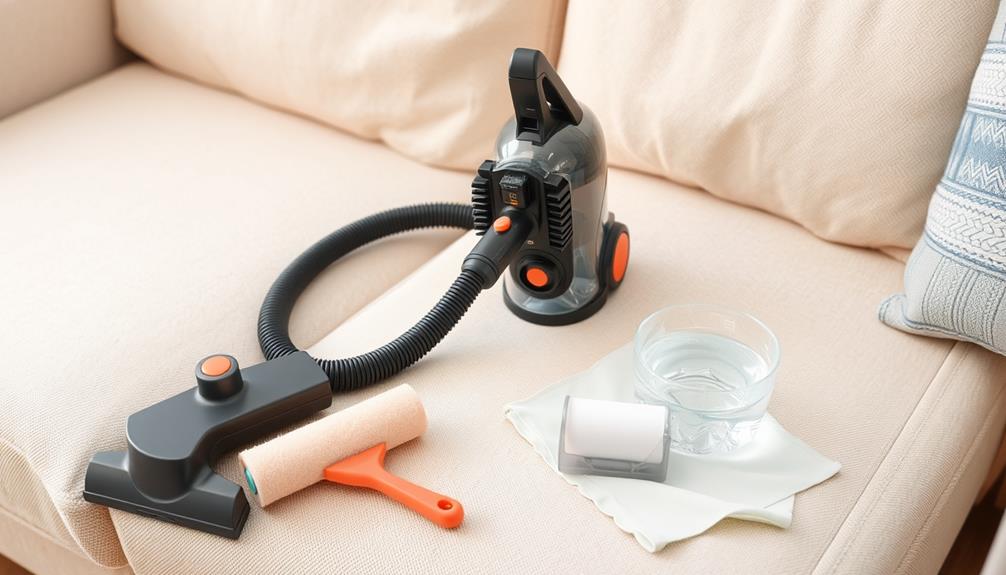
Maintaining your sofa's fabric isn't just about looks; it's crucial for longevity and can be compared to managing a budget, where regular maintenance is key to avoiding costly repairs.
By incorporating a few regular maintenance tips, you can keep your upholstery in top condition and extend its lifespan. Here are four key practices to follow:
- Vacuuming: Aim to vacuum your sofa at least once a week. This helps remove dust, crumbs, and pet hair, preventing buildup that can lead to odors and stains.
- Fluffing: Every few weeks, fluff and rotate your cushions. This action maintains their shape, prevents uneven wear, and keeps your upholstery looking fresh.
- Spills: Immediately address any spills using a blotting technique instead of rubbing. This simple step can prevent permanent stains and damage to the fabric.
- Fabric Protector: Consider applying a fabric protector like Scotchgard. This creates a barrier against spills and stains, further extending the life of your upholstery.
Additionally, don't forget to deep clean your sofa every 12 to 18 months, especially in homes with pets or heavy use.
Regular cleaning is essential for maintaining hygiene and appearance, ensuring your sofa remains a comfortable and beautiful centerpiece in your home.
Frequently Asked Questions
How Do You Clean and Deodorize a Fabric Couch?
To clean and deodorize your fabric couch, start by vacuuming thoroughly. Sprinkle baking soda, let it sit, then vacuum again. For stains, use a mild solution and blot gently until the marks lift. Confirm proper drying.
What Is the Best Way to Clean a Fabric Sofa?
Cleaning your fabric sofa’s best involves checking the cleaning tag first. You’ll want to vacuum regularly and treat stains with a gentle solution. For odors, try baking soda; it works wonders and refreshes your space! Additionally, you might consider using natural methods for sofa cleaning, which can be both effective and eco-friendly. A mixture of mild soap and water can help remove tougher stains without damaging the fabric. Always remember to test any cleaning solution on an inconspicuous area first to ensure it doesn’t affect the color or texture of your sofa.
How Do You Clean a Fabric Couch Without Washing It?
To clean your fabric couch without washing it, vacuum thoroughly, spot clean with a vinegar-water solution, use a water-based cleaner if appropriate, and sprinkle baking soda to absorb odors before vacuuming again for freshness.
Can I Use Dawn Dish Soap to Clean My Fabric Couch?
Yes, you can use Dawn dish soap to clean your fabric couch. Just mix it with water and vinegar, but make sure to dilute it properly and test on a hidden area first to avoid damage.
Conclusion
Cleaning your sofa fabric can feel intimidating, but it's worth the effort for the comfort it brings. While stains may seem like a permanent reminder of a spill, with the right techniques, you can transform your couch back to its pristine state. Regular maintenance might seem tedious, yet it saves you from more extensive cleaning later. Embrace the contrast between a neglected sofa and one that's cared for, and you'll see just how rewarding your efforts can be.
